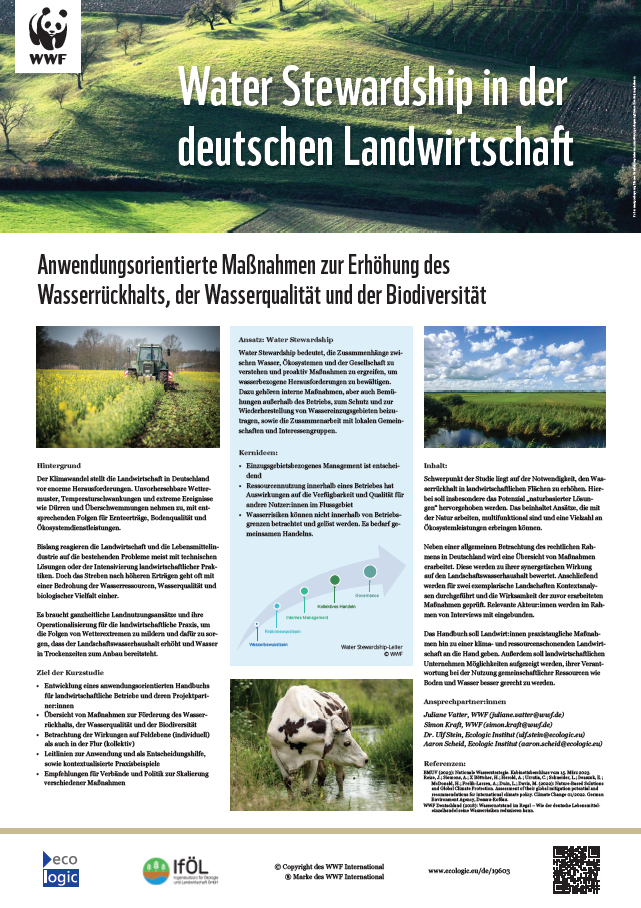Handbook of Agricultural Measures for Enhancing Water Retention, Water Quality and Biodiversity in Germany
- Publication
- Citation
Ida Meyenberg, Ulf Stein, Aaron Scheid, Rodrigo Vidaurre, Felix Dengler, Christian Schneider, Johanna Krähling, Richard Beisecker (2024): Handbook of Agricultural Measures for Enhancing Water Retention, Water Quality and Biodiversity in Germany. Ecologic Institute, Berlin. https://doi.org/10.5281/zenodo.15236788
Germany is under increasing water stress, despite rising precipitation and extreme weather. The core issue lies not in rainfall quantity, but in the inability of our anthropogenically modified landscape to retain water. The Handbook of Agricultural Measures for Enhancing Water Retention, Water Quality and Biodiversity addresses this challenge head-on. Developed with farmers and advisors in mind, it presents field-tested and scientifically evaluated nature-based solutions for agricultural water management. These measures do not compete with productivity – they ensure long-term agricultural viability in a changing climate.
From Scientific Insight to Farm-Level Action
The handbook features ten practical measures tailored to diverse natural regions in Germany, reflecting variations in soil, climate, and hydrology. Measures such as agroforestry systems, adapted crop rotation, and vegetated drainage swales are presented in detailed fact sheets that include ecosystem benefits, economic costs, and implementation examples. These fact sheets empower farmers to act within their own operational context and contribute to landscape-wide water retention.
Multi-Benefit Strategies: Linking Water, Soil, and Biodiversity
What sets this handbook apart is its integrated approach. Measures are assessed not only for their water retention and groundwater recharge potential, but also for their contributions to water quality and biodiversity. For instance, converting arable land to extensively managed grassland simultaneously reduces nitrate leaching, enhances habitat quality, and supports soil structure – all while maintaining agricultural use.
Overcoming Barriers: Economic Viability and Policy Support
The authors do not overlook economic realities. Each measure is costed based on reference farms and realistic implementation scenarios. Legal and policy frameworks are discussed in a generally comprehensible way, highlighting opportunities to integrate measures into national agri-environmental programs. Where administrative barriers exist, the handbook offers tips for navigating approval processes and funding channels.
Scaling Up Nature-Based Solutions Across Agricultural Landscapes
The long-term impact of these measures depends on their widespread adoption. The final chapter presents pathways for upscaling: from coordinated action among neighboring farms to regional strategies that support resilient water systems. The handbook positions agriculture as an active player in water stewardship and nature conservation, aligning farm-level practice with national water strategy objectives.





